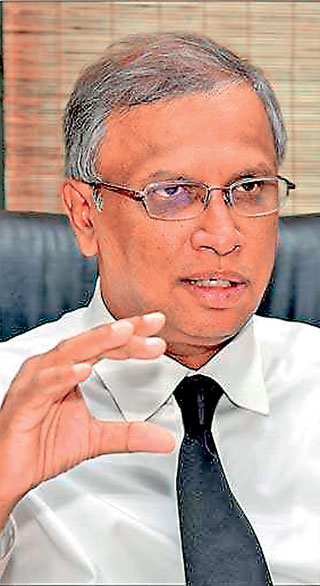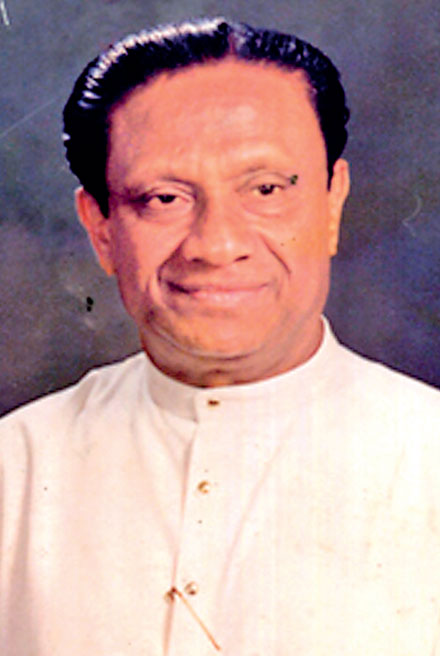Monday Jan 19, 2026
Monday Jan 19, 2026
Thursday, 31 March 2022 01:10 - - {{hitsCtrl.values.hits}}

President Gotabaya Rajapaksa

TNA Spokesperson M.A. Sumanthiran

Indian Minister of External Affairs Dr. Jaishankar

SJB Leader Sajith Premadasa

Former President late Ranasinghe Premadasa
|
 While the public political discourse reveals alarm at perceived Indian inroads into Sri Lanka’s security and sovereignty with the array of new agreements between the Rajapaksa regime and our neighbour, that knee-jerk reflex may hinder comprehension that the reality is worse than that.
While the public political discourse reveals alarm at perceived Indian inroads into Sri Lanka’s security and sovereignty with the array of new agreements between the Rajapaksa regime and our neighbour, that knee-jerk reflex may hinder comprehension that the reality is worse than that.
My understanding upon a read-through is that of the agreements signed, the Floating Dock, the Dornier aircraft and the Maritime Rescue Coordination Centers, seem to have originated from the Sri Lanka end, which is to say these were requests made or expressions of interest by Sri Lanka.
Raj or Rajapaksas?
The Indians agreed, while factoring in an add-on to ensure that they aren’t double-crossed by the Rajapaksas who could back-flip to their preferred primary partnership with China. The add-on was that the Indians built themselves into the projects, making them ‘joint’ and inserting their own personnel. Any Big Power would do the same if given the opportunity, but who gave them this opportunity? It was the Sri Lankan side that made the requests, so the opening was provided by the Rajapaksa regime.
Who in the Government of Sri Lanka requested/expressed interest in Dorniers, a Floating Dock and Maritime Rescue Coordinating Centers from India, when the economy itself is barely afloat and people are finding it hard to live?
A clue may reside in the fact that all three requests have a “security” character. It is reasonable to assume that the requests came from our security sector probably via the Ministry of Defence.
GR-TNA-13A
I was fired from Geneva by the Rajapaksas six weeks after we won a decisive victory at the UNHRC in May 2009, allegedly for my support and advocacy of the 13th amendment.
In 2011 when I served in Paris, visiting Foreign Minister G.L. Peiris fished out of his briefcase (cautioning that the matter was “serious”), a transcript of remarks (albeit maliciously rearranged in their sequence) I had made in the company of Minister Bandula Gunawardena while in conversation with India’s special envoy to UNESCO, the legendary Karan Singh, agreeing with the latter’s contention that Sri Lanka’s interests would be well-served by implementing the 13th amendment in accordance with our wartime pledges, including President MR’s personal reiteration to him in New York. Dr. Karan Singh warned that India was under pressure from Jayalalitha to vote against us in Geneva, which happened the next year.
A few years ago, a demagogic diatribe was directed at me on the 13th amendment by GR’s uber-hawks Sarath Weerasekara and Ven. Medagoda Abeytissa.
Now, I get to be entertained by the televised spectacle of GR entertaining without contradiction the TNA’s urging for inclusion in his new Constitution, of its political solution which “goes beyond the 13th amendment” in a “united Sri Lanka” (as distinct from a unitary state).
President GR left the dialogue with the TNA way too late. He would have had a stronger hand had he done so much earlier. Now, he heads a bankrupt government in a desperate search for money from India and endorsement from the US. The Sinhala majority South has turned fully and forcefully against him. It is hardly likely to embrace any new agreement he might arrive at with the TNA.
Tamil nationalist politics is marked by the exhibitionist drive for demands rather than results i.e., progress in actual outcomes and achievements. The TNA could and should have nailed down a Presidential commitment and a deadline for the holding of elections to the Provincial Councils, preceded by swift amendments to unclog the electoral process. It did not do so, though the US ‘intervention’ it had advertised came in the form of Victoria Nuland urging precisely the early holding of Provincial Council elections.
Had the TNA clinched the deal, it could have been sealed during India’s MEA Dr. Jaishankar’s visit to Colombo.
In talks with GR the TNA advertised its brand, advocating the accommodation of its ‘political solution’ in the draft of President GR’s new Constitution; a ‘solution’ which spokesperson M.A. Sumanthiran explicitly confirmed to the mass media, went “beyond the 13th amendment” in a united, (not unitary) Sri Lanka.
A vast majority of the country will seize the opportunity of a referendum, as the Chileans did under Pinochet, to register a huge NO vote, break the back of the regime, delegitimise it and begin the transition to its ouster. In the current adversarial mood, ‘going beyond’ 13A will enhance the Southern swing against the Government. It will be a reverse tectonic shift, flipping 2019-2020.
President Gotabaya’s hardcore ultranationalist base, already vastly diminished, would shatter on this issue, given the cognitive dissonance that anything beyond 13A—or even 13A itself! – will generate. He may risk a replay of the S.W.R.D. Bandaranaike trajectory, beginning with the 1957 demonstrations against the ‘Banda-Chelva pact’ and culminating in tragedy in 1959. (This time it may be called the Gota-Suma Pact.)
President Gotabaya’s unprecedentedly ruinous economic performance has made most Sinhalese forget about the ethnoreligious factor. As in 1977, economic issues, by becoming existential ones, have broken through the ethnic layer. One must recall though that the non-ethnic consciousness of 1977 had been radically reversed by the 1980s.
Today’s historic breakthrough in popular consciousness, sourced in the shared suffering across the ethno-religious divide, can and must be made durable, long-term. All the TNA has to do is to stick to the most feasible and least divisive, namely the implementation of the 13th amendment and the expeditious holding of PC elections.
|
Constitutional adventurism
Meanwhile, a leading legal left-liberal who co-authored the draft documents of a new Constitution during Yahapalanaya has recently opined that the executive presidency could be repealed without a referendum.
Even if that were so, it is irrelevant because legitimacy trumps legality in politics and history. An executive presidency directly elected by the people cannot be abolished without consulting the sovereign people at a referendum on a matter crucial to the franchise without triggering colossal blowback from the Sinhalese who think that a strong centre/leader is a necessary guarantee of an indispensably unitary state.
Without the steel frame of an executive presidency, economic stabilisation measures, structural adjustment ‘reforms’ and a rapid revival of the Open Economy would cause uncontainable volatility, even anarchy. Without that steel frame, the 13th amendment, especially but not only with enlargement, would prove centrifugal, even irredentist. The combination of economic adjustment and ethno-political autonomy within a purely parliamentary framework minus an overarching executive presidency, is a formula for combustion.
If Pakistan had a directly elected President instead of a PM dependent on parliament, Imran Khan, South Asia’s most enlightened leader would not be dangling by a thread today.
|
Political Nandikadal
In a recent piece which carries the dramatic title ‘Sri Lanka’s Financial Meltdown Could Be End of The Road for Rajapaksa Family’, veteran Indian journalist Seema Guha, Foreign Editor of the periodical Outlook, zeroes in on who and what “wreaked havoc”:
“…President Gotabaya’s sudden announcement on last April of a complete ban on chemical fertilisers to make Sri Lanka the first in the world to go completely organic, wreaked havoc on the economy. Agriculture is the mainstay of nearly 70 per cent of the people, and the overnight change without careful planning backfired…The island’s US $1.5 billion tea industry that employs a million people was also badly affected by the fertiliser ban…” (Sri Lanka’s Financial Meltdown Could Be End Of The Road For Rajapaksa Family (outlookindia.com))
The South China Morning Post made this call:
“… The economic turbulence is the worst in living memory. The decision to lunge into organic farming last year by the government turned out to be disastrous. The ban on all chemical fertilisers, without preparing farmers, led to a surge in prices and food shortages. Although the policy was partially reversed in December, the damage had been done.
“Agriculture is seriously distressed. Now they want to import fertilisers but with the war in Ukraine, fertiliser isn’t available because other countries have long-term contracts that have tied up supplies,” said retired Indian diplomat Neelam Deo…” (Struggling Sri Lanka hits up India for cash – but China still has deeper pockets, analysts say | South China Morning Post (scmp.com))
The world’s most famous newspaper the New York Times nailed it:
“…Then Gotabaya Rajapaksa came to power, enacting a sweeping tax cut just before the pandemic. Now Sri Lanka is posting negative foreign assets for the first time in its history...
And it’s not just fuel and medicine that are in desperately short supply, but also that most essential necessity: food. Because of a poorly executed plan to reduce imports by going organic, Sri Lankan farmers were short of fertiliser this growing season, resulting in a lack of the country’s staple food, rice…” (Sri Lanka Economy Has ‘Hit Rock Bottom,’ Putting Pressure on President - The New York Times (nytimes.com))
Now, the Peradeniya Teaching Hospital among others, halted surgical operations due to lack of medicines and the visiting Indian Minister of External Affairs Dr. Jaishankar felt moved to help out. Public exams for schools are being cancelled because the Government has run out of paper.
Gotabaya Rajapaksa has clocked the worst record not only for any Sri Lankan President but also for any leader Ceylon/Sri Lanka has ever had since 1948. His electoral legacy will remain for at least a generation until traumatic memories fade and their re-telling no longer re-echoes.
The national battlespace indicates an inevitable socio-political Nandikadal:
1) An increasingly assertive mainstream democratic Opposition —SJB and JVP—attacking on two fronts, in and out of Parliament, in competition.
2) Spontaneous protests all over the island from all social quarters. An unprecedented mobilisation of the well-educated, bilingual middle-classes in the urban/suburban areas.
3) The ‘Karuna rebellion’ led by Wimal Weerawansa and Udaya Gammanpila, which together with the dissent from the SLFP and the restive 11-party bloc, renders the two-thirds majority vulnerable.
4) The rumblings of the rural giant as the Maha harvest fails and farmers refuse to engage in Yala cultivation without adequate compensation, the presidential abandonment of the failed ‘organic’ policy and restoration of the fertiliser subsidy.
5) The international moral-ethical indictment by the Catholic Church.
The Rajapaksas are already a socio-politically dead clan walking, with only a jerky twitch of social legitimacy.
|
Economic fundamentalisms
The SJB leader’s development philosophy articulated in his hour-long ‘social democracy’ parliamentary oration of 22 November 2021 doesn’t seem to be shared by the SJB’s economic policy team, going by the set of five main policy reforms presented by one of them in the Daily FT’s sister paper recently.
The 16-paragraph article does not devote a single paragraph to agriculture, instead according it just a single sentence. That sentence contradicts the SJB leader’s pledge to the farmers to provide fertiliser at affordable (i.e., subsidised) prices in response to the peasantry’s collective cry for the restoration of chemical fertiliser at subsided rates. A recommendation in the policy reform article is that “In agriculture, instead of providing fertiliser as a subsidy, let’s provide technology as a subsidy.” Does this mean—which is to say, doesn’t it mean—that the fertiliser subsidy will NOT be restored? Which exactly is the SJB stand on this decisive matter? Will the SJB leader have to “walk back” his promises to the farmers?
How many Sri Lankan soil scientists and agronomists will back this recommendation? Will technology instead of fertiliser restore and sustain the productivity of the soil?
The SJB expert’s alternative economic policy reforms as contained in this article has only a single bland, nebulous reference to the poor, obviously reflective of his priorities at a time when a large number of people have been plunged in to poverty due to the Government’s policies.
Sri Lankans last suffered greatly in their everyday economic life in the 1970s, due to a closed economy, an acute forex shortage and the OPEC oil price hike.
Instead of euthanising State-owned enterprises classifiable as non-beneficial as recommended in the 5-point-reforms, when statism was at its zenith, President Premadasa’s own prescription in April 1973 was on creating competition by eliminating monopolies:
“…We should evolve a scheme under which the public sector, the co-operative sector, the private sector and a combination of all these three sectors – a joint sector – could function in competition with each other. Such competition will bring the maximum benefit to the people who need not become slaves of either a public or private monopoly. The Government should ensure through its legislative and planning processes that the people participate in all aspects of development without allowing monopolies — state or individual.” (R. Premadasa, Ibid)
Unilateral, market fundamentalist ‘shock therapy’ instead of a consultative, consensual, compromise –President Premadasa’s three Cs—on reform, would trigger labour unrest which could destabilise any economic recovery package.
The policy prescription does not contain the word “State’ except as in ‘state-owned enterprises’, indicating hardly and role for the ‘State’, except the liberal ‘nightwatchman’ role. The Chinese and Vietnamese economic planners would be appalled.
The policy perspective piece does not once use the term plan/planning.
What appears to be evidence of policy continuity with a Ranilist UNP (or Ranilist-Mangalaist UNP) will achieve two counterproductive results:
(a) Leave a huge space on its left for the JVP-NPP to occupy at the next parliamentary election, and thereby divide the Opposition vote more evenly. The JVP only has to pledge the restoration of the fertiliser subsidy and price controls on essentials to soak up votes.
(b) Suffer the same fate as that neoliberal experiment did in 2001-2004 and 2015-2019: a one-term bubble, easily besieged.
The JVP-NPP rejects the Open Economy and indicts all governments since Independence, and therefore cannot be our preferred pathway from the crisis. The Left rejection rather than rebalancing of the 1977 Open Economy model reveals a lack of Realism. The proposed extension of it by the Opposition’s Center-Right policy caucus, without equal weightage for equity (as Nobel prize-winner Joe Stiglitz urged the UNP in 2015) is no less revealing of a recession of Realism. The only sustainable growth is growth with equity.
Realism is the prerequisite for escape from Ground Zero. Fundamentalism is the opposite of Realism. The anti-globalisation fundamentalism of the Left and the market fundamentalism of the Right block the exit. Where is the Realist progressive economic centre/centrism?
Rescuing the country from the cataclysm of the late 1980s which he inherited, President Premadasa stated the guiding principle of recovery:
“Minimal solutions for many, rather than high standards for a few, will be our vision for the immediate future.” (President Premadasa, ‘Learning, Unlearning and Relearning’—9.12.’90)
Which political formation will identify itself with this perspective, and articulate it unambiguously, for the citizens suffering the consequences of the economic policies of the present regime?
Will the SJB leader whose legacy it is, having articulated a similar vision himself, prevail over his party’s legacy of the last quarter-century of the (de-Premadasa-ised) neoliberal Ranilist UNP from which it emerged? Considering the heavy, hazy ideological hangover its economic policy barons show no signs of recovering from, that question remains open.